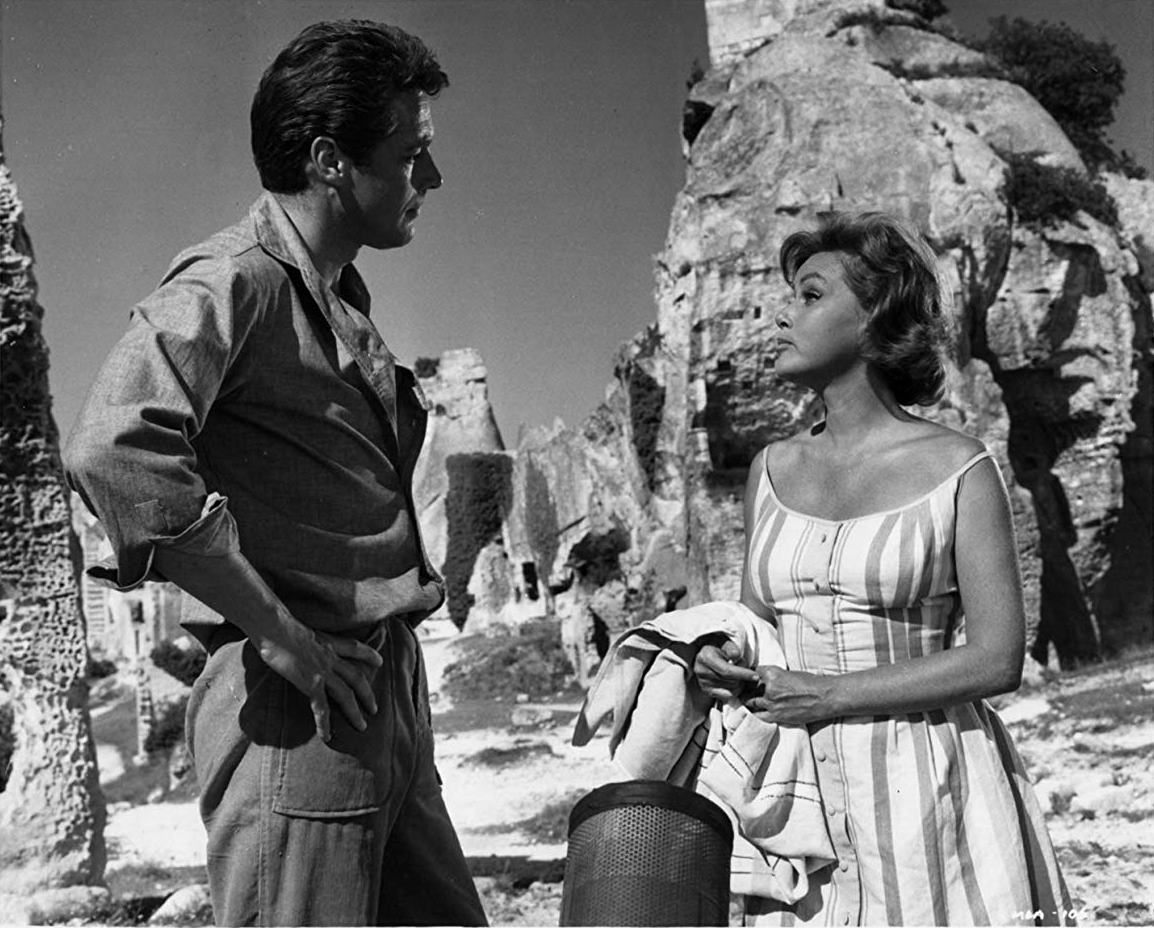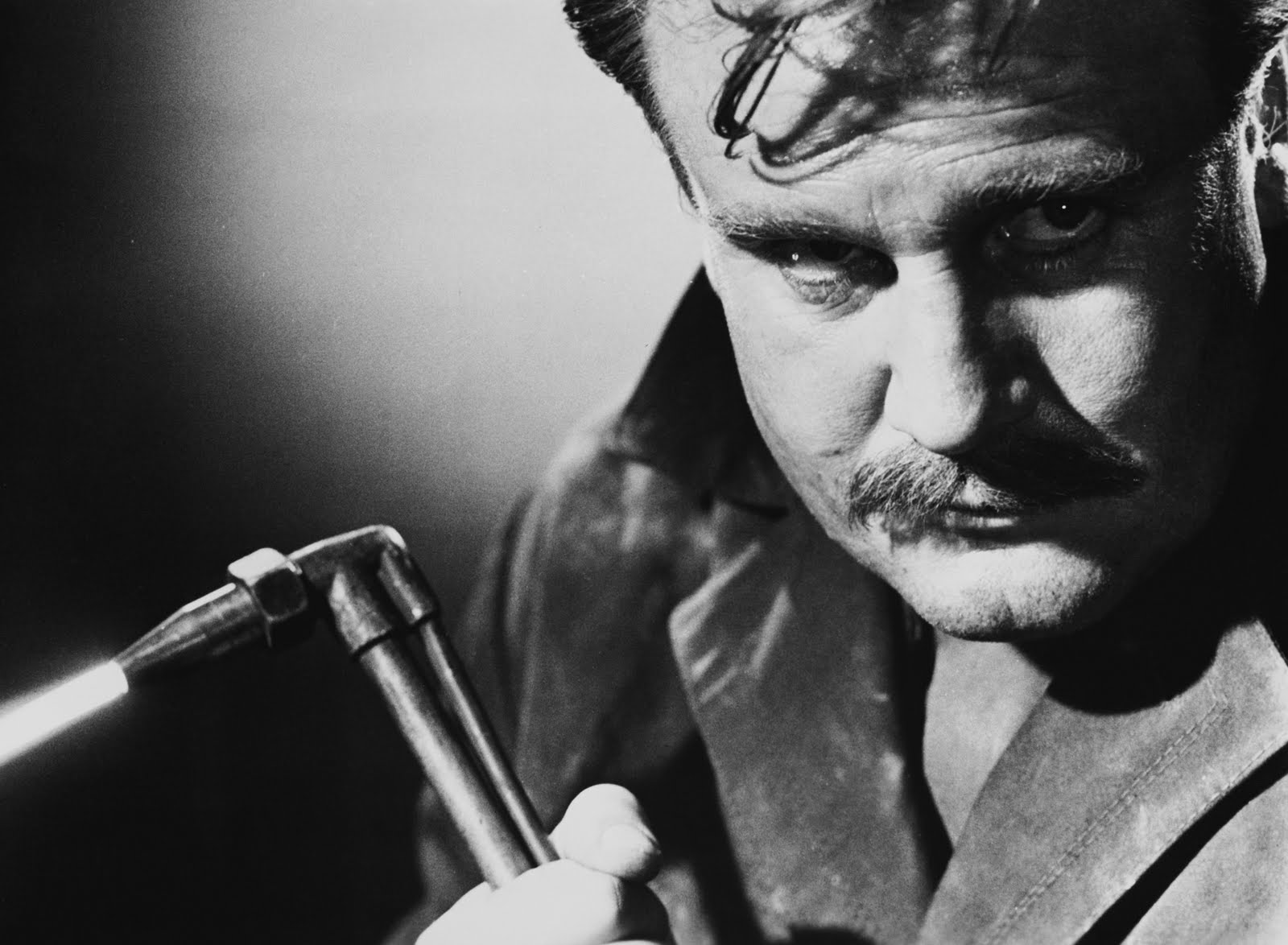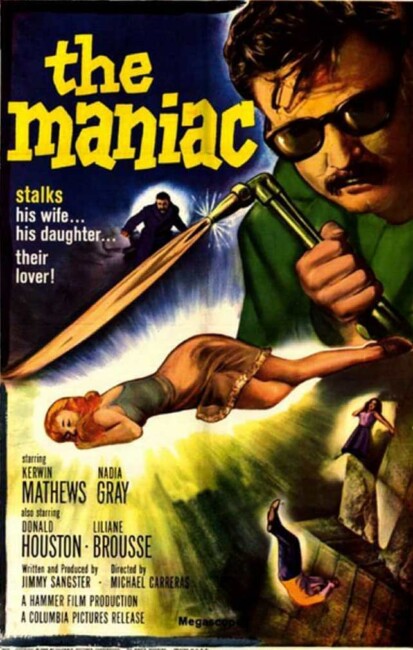UK. 1963.
Crew
Director – Michael Carreras, Screenplay/Producer – Jimmy Sangster, Photography (b&w) – Wilkie Cooper, Music – Stanley Black, Art Direction – Edward Carrick. Production Company – Hammer.
Cast
Kerwin Mathews (Jeff Farrell), Nadia Grey (Eve Beynat), Liliane Brousse (Annette Beynat), Donald Houston (Georges Beynat), George Pastell (Inspector Etienne), Jerold Wells (Gilles), Arnold Diamond (Janiello)
Plot
American artist Jeff Farrell arrives in the tiny town of San Jerome in France’s Camargue region. He becomes attracted to Annette, the nineteen year-old daughter of the inn’s owner Eve Beynat. Instead, Eve moves in on Jeff and the two become lovers. Eve reveals that her husband Georges has been placed in an asylum, diagnosed as insane after he killed a man who molested Annette. Jeff wants Eve to come away with him but she is still married to Georges. After visiting Georges, the two of them hatch a plan where she and Jeff will help Georges escape, whereupon he will grant permission for them to be together. They aid in the escape and Georges flees to go into hiding in England. However, they find that he has left the murdered body of a warder in the trunk of the car and are forced to dispose of it. Afterwards, someone plays taunting games with them and they believe that the psychopathically crazed Georges has returned seeking revenge.
Maniac was one of the films from England’s Hammer Films. Hammer had had great success with their remakes of The Curse of Frankenstein (1957) and Dracula/The Horror of Dracula (1958) and had gone onto a series of sequels to these and other horror works. As the decade turned, there was the enormous success of Alfred Hitchcock’s Psycho (1960) in the US. Hammer promptly joined a number of other filmmakers around the world that started making copies of Psycho. Beginning with A Taste of Fear/Scream of Fear (1961), they turned out a series of Psycho-Thrillers, most of which had one word titles that describe a disturbed state of mind with the likes of Paranoiac (1963), Nightmare (1964), Hysteria (1964), The Fanatic/Die, Die, My Darling (1965), The Nanny (1965), Crescendo (1970) and Fear in the Night (1972).
Maniac was one of the handful of occasions when Hammer producer Michael Carreras, grandson of the company’s founder, stepped out of a producing role and into the director’s chair. Carreras had directed two of Hammer’s earlier non-genre war films with The Steel Bayonet (1957) and Visit to Canton (1961) and went onto make some of their more staple genre efforts such as The Curse of the Mummy’s Tomb (1964), Slave Girls/Prehistoric Women (1967) and The Lost Continent (1968). The script is from Jimmy Sangster who wrote the abovementioned Frankenstein and Dracula films and became most associated with their psycho-thrillers, also writing Paranoiac, Nightmare, Hysteria, The Nanny and Crescendo, and directing The Horror of Frankenstein (1970), the lesbian vampire film Lust for a Vampire (1971) and Fear in the Night.

Maniac does one of the rare things for a Hammer film of this period – it goes out of doors rather than shoots in studio interiors. In this case, Michael Carreras and the production crew travelled to the Camargue region of France, which consists of some 300 square miles of marshes and sandbars in the southeast of the country. It is not the best of locations – on screen it seems like endless empty beach and sand with almost no features on the horizon. Moreover, the film is shot in black-and-white (as almost all of Hammer’s psycho-thrillers were), where one feels that the colour Hammer employed elsewhere would have featured the area to better advantage. Cinematographer Wilkie Cooper also fails to use the location in any cinematic way, mostly shooting the whole film in dreary two-shots and medium angles – the sole exception might be a scene where Kerwin Mathews and Nadia Grey race along the beach on horses.
Michael Carreras lacks much in the way of directorial style – he is certainly nowhere up alongside Terence Fisher or Freddie Francis, Hammer’s most prolific directors, in terms of style. Most of the film takes place with the dreary lack of exception of a British quota quickie where you might be mistaken for thinking during the film’s first half that it is a torrid melodrama about love affairs in the tropics rather than a psycho-thriller. That said, Carreras does make things work with occasional reasonable effect when the psycho-thriller element kicks in – there is an effectively tense chase sequence through a set of ruined tunnels at the climax.
When the psycho-thriller element does arrive, it is more than clear that Jimmy Sangster has borrowed a few leaves from Les Diaboliques (1955), the classic French thriller whose plot about fooling a woman into believing that her murdered husband was not dead in a contorted plan to kill her was imitated by a number of other psycho-thrillers of this era. Sangster borrows several plot elements from Les Diaboliques – the husband who was thought to have been murdered or disappeared but continues to turn up; the impression that he or someone else is taunting the conspirators about their guilt and complicity; and especially the elaborately contrived ending where everything has been set up to fool somebody.

On the minus side, the eventual explanation of what is going on [PLOT SPOILERS] is so ridiculously improbable that the entire film falls apart when logically examined. Here we learn that the scheme that Kerwin Mathews thought he was buying into where he was helping Nadia Grey spring her husband from the asylum so they could get his blessing to be together was not the case at all. There is then a twist where the husband (Donald Houston) reveals this is part of his plan to kill Kerwin Mathews and leave his and the dead warder’s bodies so that the authorities will believe that the two escapees were killed in an accident so that he can leave with Nadia Grey.
[PLOT SPOILERS CONTINUE] However, another twist shows that this is not the case either as daughter Liliane Brousse is taken to meet her father and fails to recognise him, before it is revealed that he is the warder and is the one having an affair with Nadia Grey and that they set everything up so that they can elope together. Stop for a moment and realise what the plan the couple have hatched is – to kill off her husband by having her seduce a stranger (Mathews) who turns up in town, letting Mathews believe that she wants to run away with him so that he can agree to help spring her husband from an asylum, during which the warder/her real lover claims to be the husband and goes along with a scheme to smuggle him away to England, then pretends to return and terrorise the couple in order to kill two people and fool the authorities into thinking that the husband and warder have been killed in an accident (with said authorities presumably asking no questions about what happened to Mathews), all so they can leave together in peace. To me, it seemed much easier when two people who wanted to be together simply just eloped and went away together.
Trailer here


